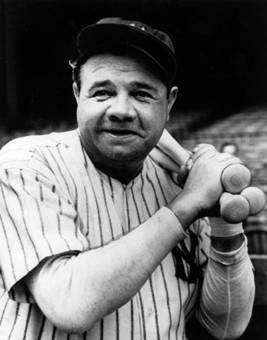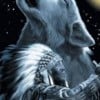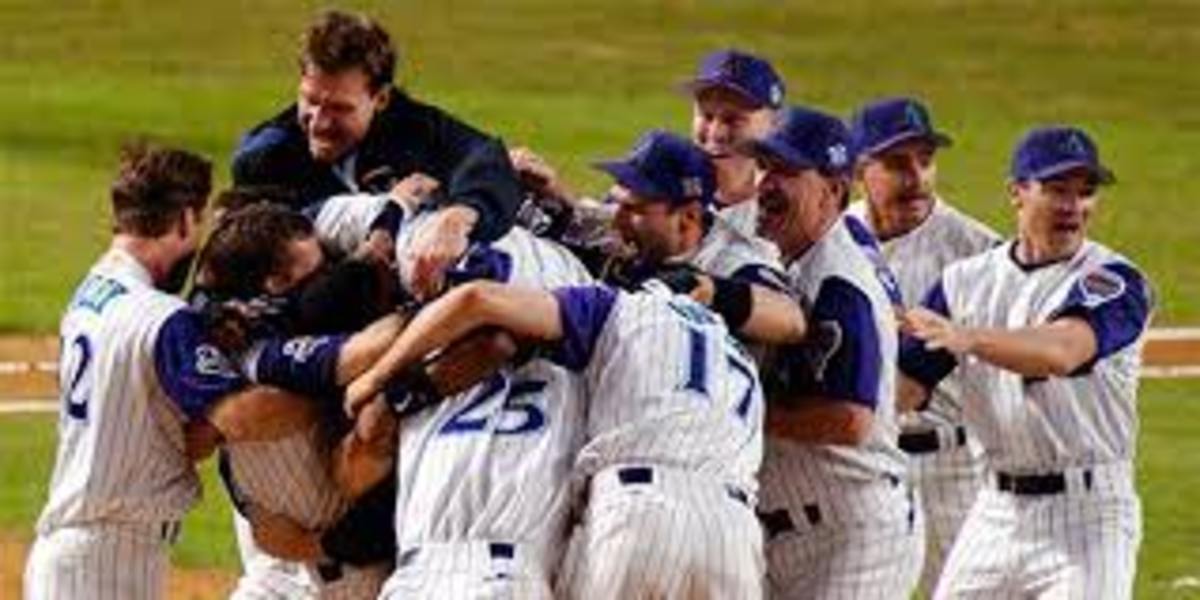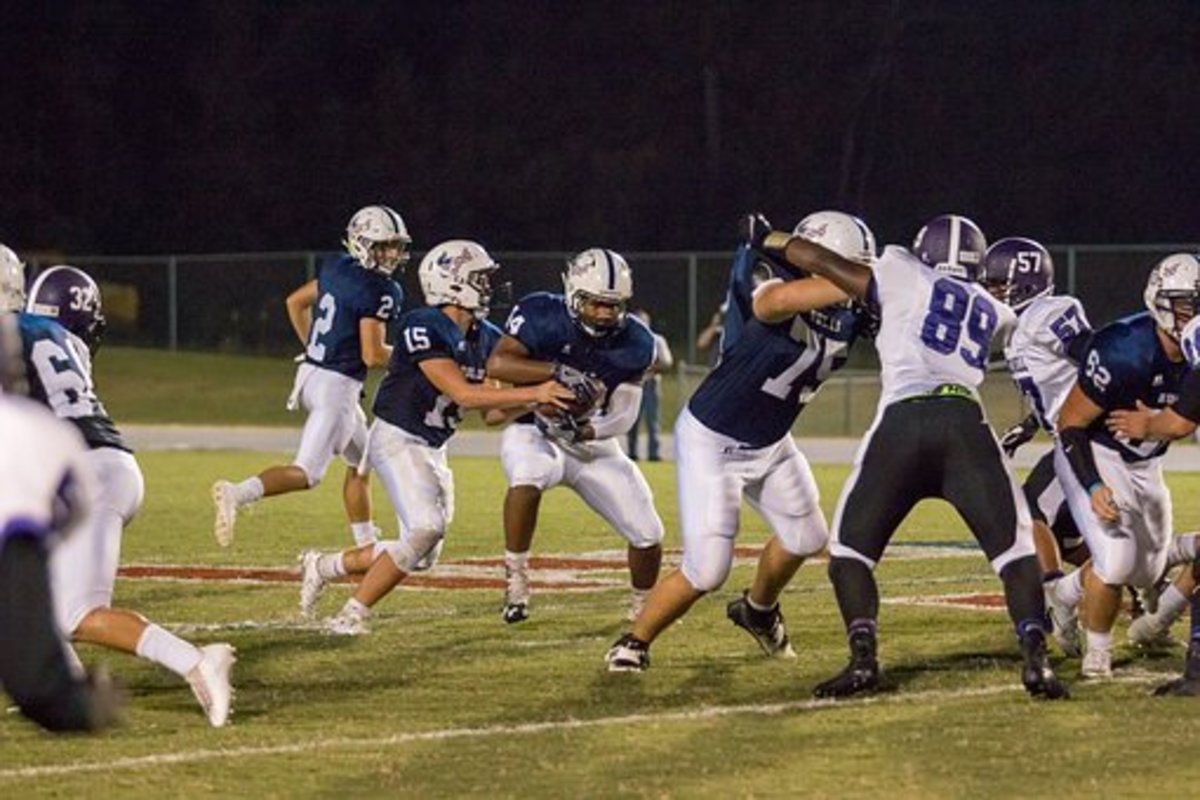Babe Ruth
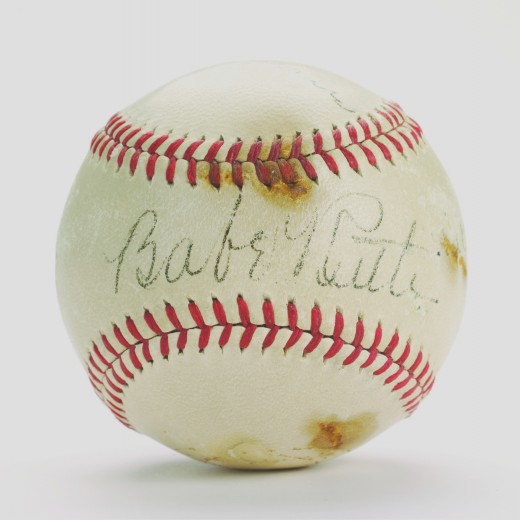
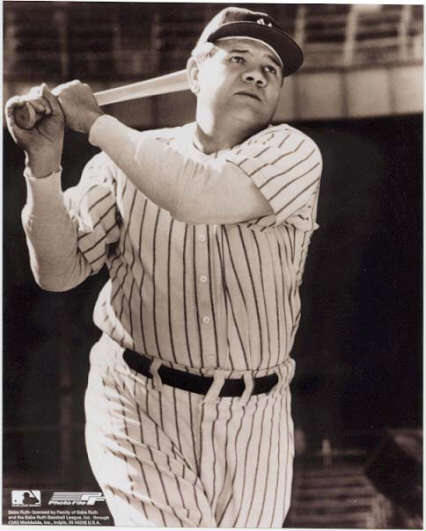
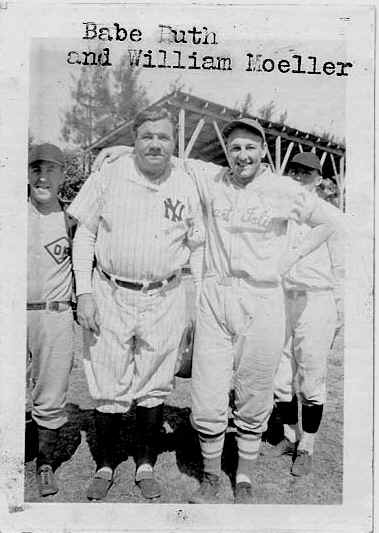
George Herman Ruth, Jr. (February 6, 1895 – August 16, 1948), also known as "Babe", "The Great Bambino", "The Sultan of Swat", and "The Colossus of Clout", was an American Major League baseball player from 1914-1935.
Although he spent most of his career as an outfielder with the New York Yankees, Ruth began his career as a successful starting pitcher for the Boston Red Sox. He compiled a 89-46 win-loss record during his time with the Red Sox and set a number of World Series pitching records. In 1918, Ruth started to play in the outfield and at first base so he could help the team on a day-to-day basis as a hitter. In 1919, he appeared in 111 games as an outfielder. He also hit 29 home runs to break Ned Williamson's record for most home runs in a single season.
In 1920, Red Sox owner Harry Frazee sold Ruth to the New York Yankees for $125,000, in part to finance a Broadway play. The transaction spawned the Curse of the Bambino. Over his next 15 seasons in New York, Ruth led the league or placed in the top ten in batting average, slugging percentage, runs, total bases, home runs, RBI, and walks several times. Ruth hit 59 home runs in 1921 then beat his own single season home run record in 1927 with 60. It stood as the single season home run record for 34 years.
With Ruth on the team, the Yankees won seven American League Pennants and four World Series titles. He played his final Major League season with the Boston Braves in 1935. In 1936, Ruth became one of the first five players elected to the Baseball Hall of Fame.
In 1969, he was named baseball's Greatest Player Ever in a ballot commemorating the 100th anniversary of professional baseball. In 1998, The Sporting News ranked Ruth Number 1 on the list of "Baseball's 100 Greatest Players." The next year, baseball fans named Ruth to the Major League Baseball All-Century Team.
Please Vote In Our Poll About Babe Ruth
Do you think Babe Ruth was the greatest Baseball Player ever.
Babe Ruth , Outfielder , Pitcher
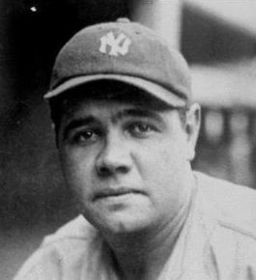
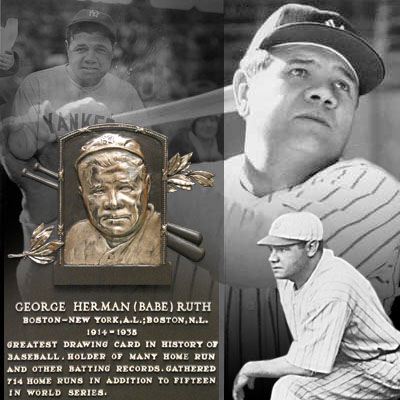
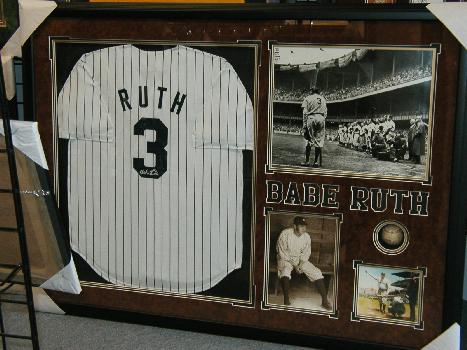
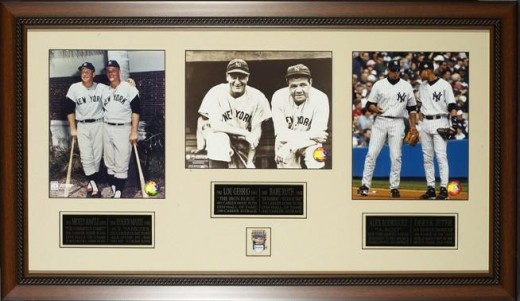
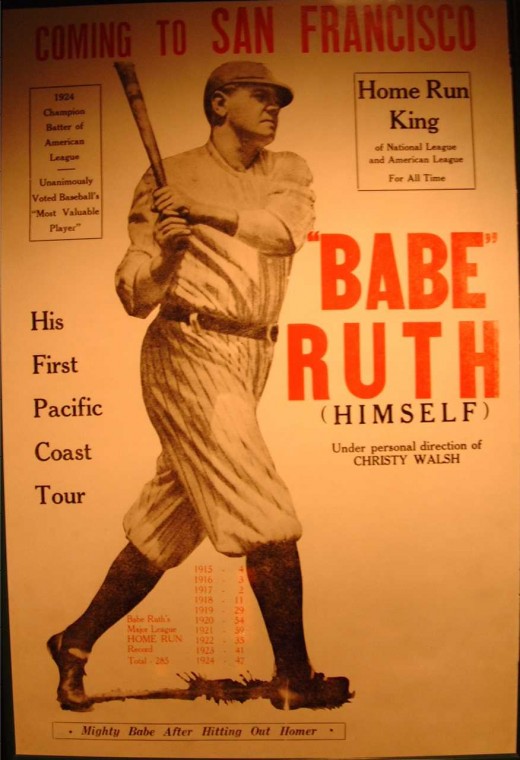
Early life
Ruth was born at 216 Emory Street in southern Baltimore, Maryland. His maternal grandfather (Pius Schamberger) was an upholsterer, rented the house located only a block from where Oriole Park at Camden Yards now stands. Ruth's parents, Kate Schamberger-Ruth and George Herman Ruth, Sr., eventually owned saloons on Lombard and Camden Street in Baltimore. Only one of Ruth's seven siblings, his sister Mamie, survived past infancy.
George, Sr., sent the seven-year-old Ruth to St. Mary's Industrial School for Boys, a reformatory and orphanage, and signed custody of his son over to the Catholic missionaries who ran the school. While Ruth was there, a man by the name of Brother Matthias became a father figure in his life. Brother Matthias taught Ruth the game of baseball. He worked with Ruth on hitting, fielding and, later, pitching.
In early 1914, a teacher at St. Mary's brought George to the attention of Jack Dunn, owner and manager of the Baltimore Orioles. After watching Ruth pitch, Dunn signed Ruth to a contract and became Ruth's legal guardian When the other players on the Orioles caught sight of Ruth, they nicknamed him "Jack's newest babe." The reference stayed with Ruth the rest of his life as he was most commonly referred to as Babe Ruth from then on.
On July 7, 1914, Dunn offered Ruth, along with Ernie Shore and Ben Egan, to Connie Mack of the Philadelphia Athletics. Dunn asked $10,000 for the trio, but Mack refused the offer. The Cincinnati Reds, who had an agreement with the Orioles, also passed on Ruth. Instead, the team elected to take George Twombley and Claud Derrick.
Two days later, on July 9, 1914, Dunn sold the aforementioned trio to Joe Lannin and the Boston Red Sox. The amount of money exchanged in the transaction is disputed.
A well-dressed Ruth in 1930.
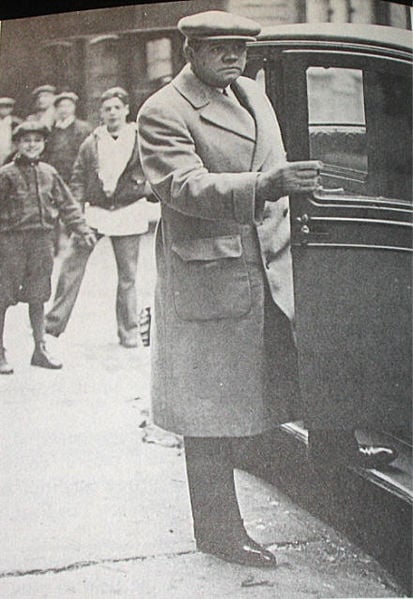
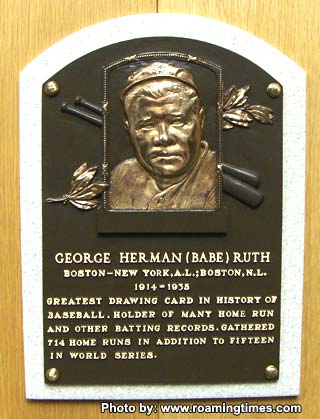
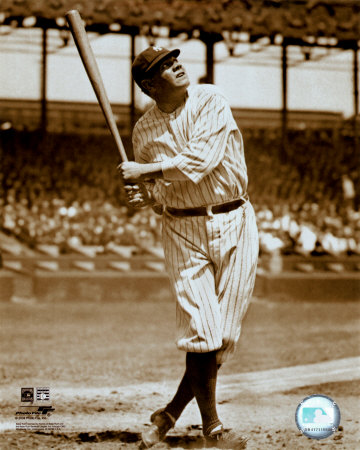
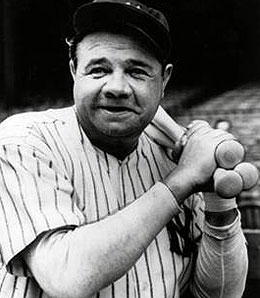
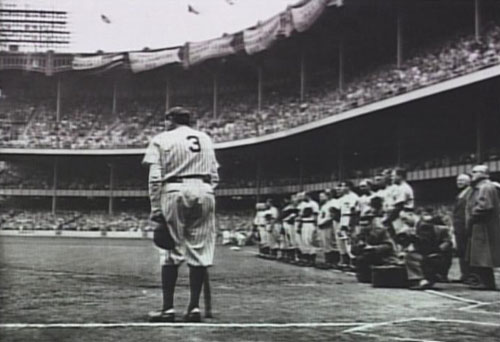
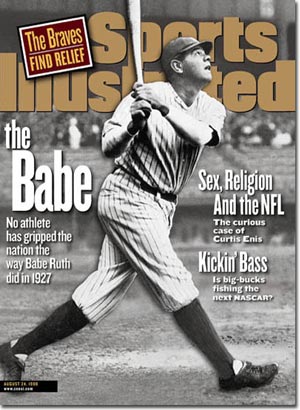
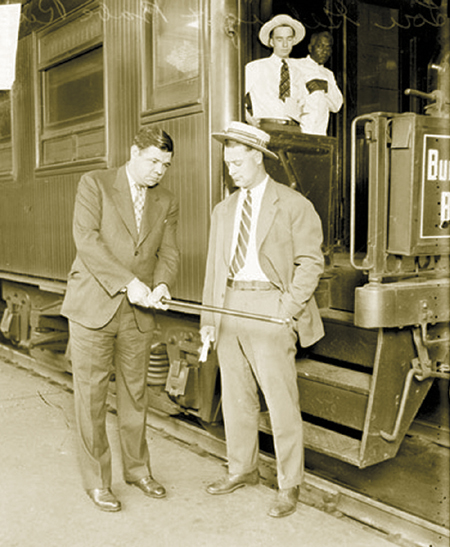
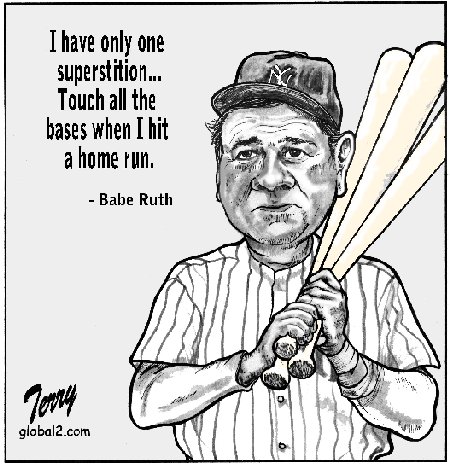
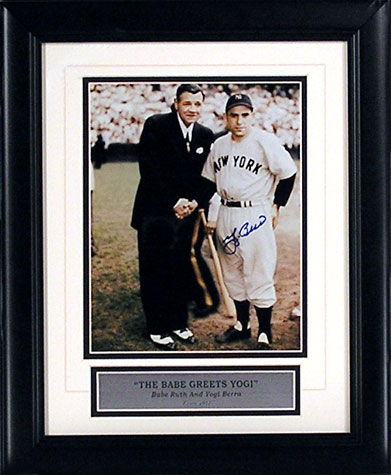
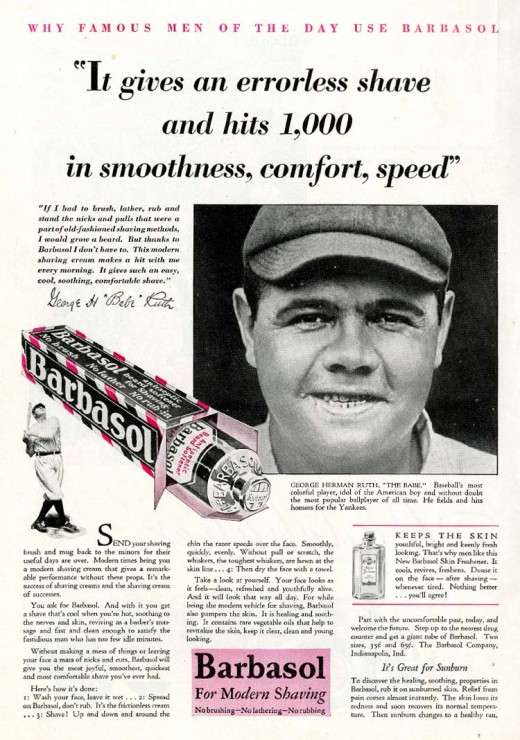

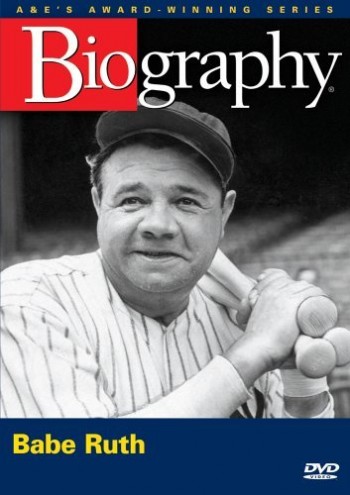
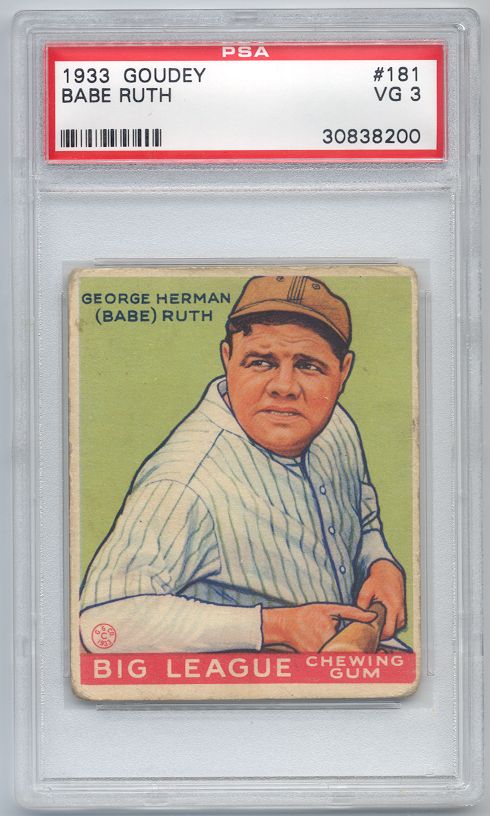
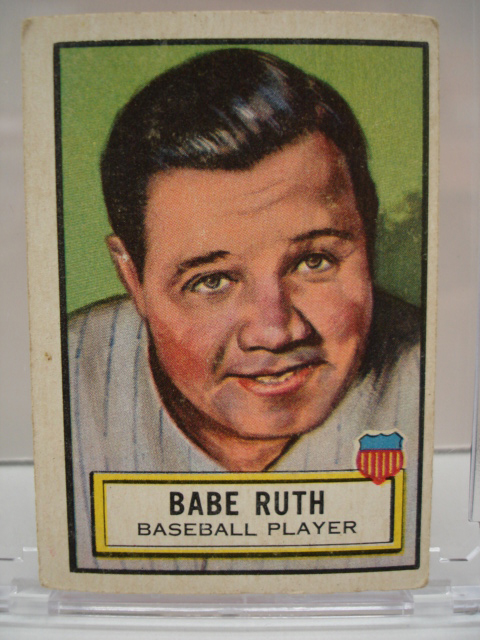
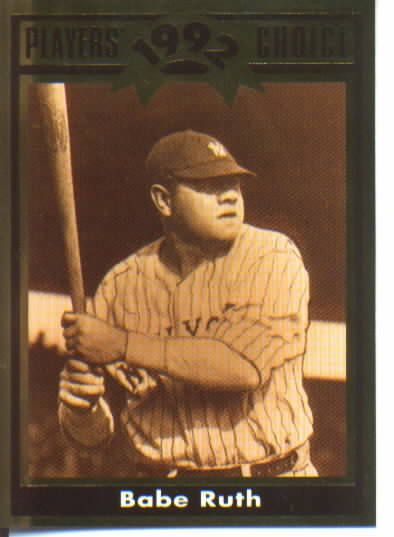
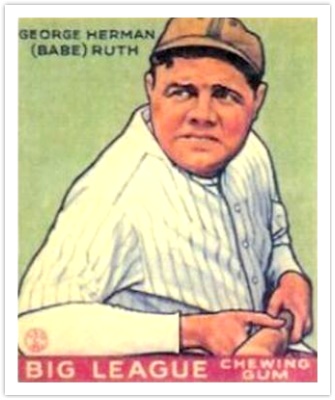
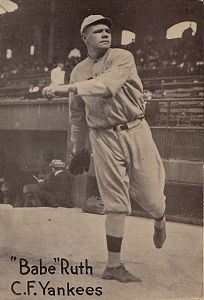
Major League Career
Red Sox years
When Ruth arrived in 1914, the Red Sox had many star players. As such, he was optioned to the minor league Providence Grays of Providence, Rhode Island for part of the season. Behind Ruth and Carl Mays, the Grays won the International League pennant. Ruth appeared in five games for the Red Sox that year, pitching in four of them. He finished the season 2-1 for the major league club. Shortly after the season, Ruth proposed to Helen Woodford, a waitress he met in Boston, and they were married in Ellicott City, Maryland on October 17, 1914.
During spring training in 1915, Ruth secured a spot in the starting rotation. He joined a pitching staff that included Rube Foster, Dutch Leonard, and Smokey Joe Wood. Ruth won 18 games, lost eight, and helped himself by hitting .315. He also hit his first four home runs. The Red Sox won 101 games that year on their way to a victory in the World Series. Ruth did not appear much in the series. He did not pitch in the series and he recorded only one at-bat.
In 1916, after a slightly shaky spring, he went 23-12, with a 1.75 ERA and 9 shutouts. Despite a weak offense and hurt by the sale of Tris Speaker to the Indians, the Red Sox still made it to the World Series. They defeated the Brooklyn Robins four games to one. This time Ruth made major contributions in the series. In game 2 of the series, the Red Sox won the game and Ruth pitched a 14-inning complete game.
Ruth went 24-13 with a 2.01 ERA and 6 shutouts in 1917, and hit .325. The Sox finished nine games behind the Chicago White Sox, good enough for second place in the AL.
In the 1918 World Series, Ruth appeared as a pitcher and went 2-0 including 1 shutout, with a 1.06 ERA. Ruth extended his World Series consecutive scoreless inning streak to 29⅔ innings.[8] Since Hippo Vaughn and Lefty Tyler, two left-handers, pitched nearly all the innings for the Cubs, Ruth, who batted left-handed registered only five at-bats.
During the 1919 season, Ruth pitched in only 17 of the 130 games in which he appeared. He also set his first single-season home run record that year with 29. It was his last season with the Red Sox.
Yankee Years
Early 20s
Ruth hit 54 home runs and batted .376 in 1920, his first year with the Yankees. His .849 slugging average was a major league record until 2001, when it was broken by Barry Bonds.
In 1921, the Yankees met the New York Giants in the World Series. Ruth badly scraped his elbow during Game 2 sliding into third base. After the game, he was told by the team physician not to play the rest of the series. Without him, the Yankees lost the series. Ruth hit .316, drove in five runs and hit his first World Series home run.
Ruth's appearance in the 1921 World Series created a problem. After the series, Ruth played in a barnstorming tour. At the time, there was a rule that prohibited World Series participants from playing in exhibition games during the off-season. Baseball Commissioner Kenesaw Mountain Landis suspended Ruth for the first six weeks of the 1922 season.
Despite his suspension, Ruth was named the Yankees on-field captain. Ruth started his 1922 season on May 20. Five days later, he was ejected from a game and Ruth subsequently lost the title.
In his shortened season, Ruth appeared in 110 games, hit 35 home runs and drove in 99 runs. Even without Ruth for much of the season, the Yankees still made it to the World Series. Unfortunately, Ruth got just two hits in seventeen at-bats and the Yankees lost to the Giants for the second straight year.
Ruth finished the 1923 season with a career-high .393 batting average and major-league leading 41 home runs.
For the third straight year the Yankees faced the Giants in the World Series. The Bambino batted .368, walked eight times, scored eight runs, hit three home runs and slugged 1.000 during the series. The Yankees won the series 4 games to 2.
The Babe had another fine year in 1924. He hit .378, with 46 home runs and 121 runs batted in. His on base percentage was .513, the 4th of 5 years in which his OBP exceeded .500. However, the Yankees finished second, 2 games behind Washington.
During spring training in 1925, Ruth fell ill. In order to recover, Ruth returned to New York. Coming off the injury, Ruth finished the season with a .290 average and 25 home runs in 98 games. The team finished next to last in the A.L. with a 69-85 mark.
Mid-Late 20s
Babe performed at a much higher level during 1926 season. That year, Ruth hit .372 with 47 home runs and 146 RBI.
The Yankees won the AL title and advanced to the World Series. Unfortunately for Ruth, the St. Louis Cardinals beat the Yankees in seven games. However, Ruth had his moments. In game 4, he hit three home runs.[9] However, he inexplicably tried to steal second base, and was thrown out in the 9th inning of the deciding 7th game to be the final out of that series. It is the only time in a baseball World Series since 1903 that the final out of a series was caught stealing.
Ruth was part of the famous 1927 Yankees, also known as Murderer's Row. The team won a then-AL-record 110 games, and took the A.L. pennant by 19 games and swept the Pittsburgh Pirates in the Series. That year Ruth hit a career high 60 home runs, batted .356, drove in 164 runs and slugged .772.
The following season started off very well for the Yankees. The team even built a 13-game lead in July. But the Yankees were soon plagued by some key injuries, erratic pitching and inconsistent play. The Philadelphia Athletics club quickly ate into the Yankees lead. In early September, the A's took over first place with a 1-game lead. But in a pivotal series later that month, the Yankees took 3 out of 4 games and held on to win the pennant.
Ruth's play in 1928 mirrored his team's play. He got off to a hot start, and on August 1, had 42 home runs. This put him on pace to hit more than the 60 home runs he hit the previous season. But Ruth's power waned, and he hit just 12 home runs in the last two months of the regular season. Still, he ended the season with an impressive 54, the fourth (and last) time he passed 50 home runs in a season plateau.
The Yankees had a World Series rematch with the St. Louis Cardinals, who had upset them in the 1926 series. The Cardinals had the same core players as the 1926 team, except for Rogers Hornsby, who was traded for Frankie Frisch after the 1926 season.
The series was no contest. The Yankees swept the Cardinals 4 games to 0. Ruth batted .625 and hit three home runs in game four of the series.
Decline and end with Yankees
In 1929, the Yankees failed to make the World Series for the first time in three years. The Yankees failed to make the World Series in each of the next three years. Although the Yankees slipped, Ruth led or tied for the league lead in home runs each year from 1929-1931.
In 1932, the Yankees went 107-47 and won the pennant under manager Joe McCarthy. Ruth did his part as he hit .341, with 41 home runs and 137 RBIs. Ruth did miss 21 games on the schedule that year; this included the last few weeks of the season.
The Yankees faced the Chicago Cubs in the 1932 World Series. The Yankees dispatched the Cubs in 4 games and batted .313 as a team. During game 3 of the series, Ruth hit what has now become known as Babe Ruth's Called Shot. During the at-bat, Ruth supposedly gestured to the deepest part of the park in the center-field bleachers in an attempt to predict the home run. The ball landed near the flagpole.
Ruth remained productive in 1933. He batted .301, hit 34 home runs, drove in 103 runs, and led the league in walks. As a result, Ruth was elected to play in the very first All-Star game. He hit the very first home run in the game’s history on July 6, 1933, at Comiskey Park in Chicago, Illinois. The two-run home run helped the AL score a 4-2 victory.
In 1934, the Great Bambino recorded a .288 average, 22 home runs, and made the All-Star team for the second consecutive year. During the game, Ruth was the first of five consecutive strikeout victims for Carl Hubbell. In what turned out to be his last game at Yankee Stadium, only 2,000 fans attended.
After the 1934 season, Ruth went on a baseball barnstorming tour in the Far East. Players such as Jimmie Foxx, Lefty Gomez, Earl Averill, Charlie Gehringer, and Lou Gehrig were among 14 players who played a series of 22 games.
1935 with the Braves
In 1935, Boston Braves owner Emil Fuchs signed Ruth to a Free Agent contract. On opening day, before a capacity crowd of over 25,000, Ruth played in his first game with the Braves. They defeated the New York Giants in Boston by a score of 4-2.
On May 25, 1935, at Forbes Field in Pittsburgh, Ruth went 4-for-4, drove in 6 runs and hit 3 home runs in an 11-7 loss to the Pirates. These were the last three home runs of his career. His last home run cleared the roof at the old Forbes Field, becoming the first player to accomplish that feat (amazingly on his last home run and near retirement).
Five days later, in Philadelphia, Pennsylvania, Ruth played in his last major league game. That season, he hit just .181 with six home runs in 72 at-bats. The Braves had similar results. They finished 38-115, and it was the third-worst record in major league history.
Ruth batting in 1918
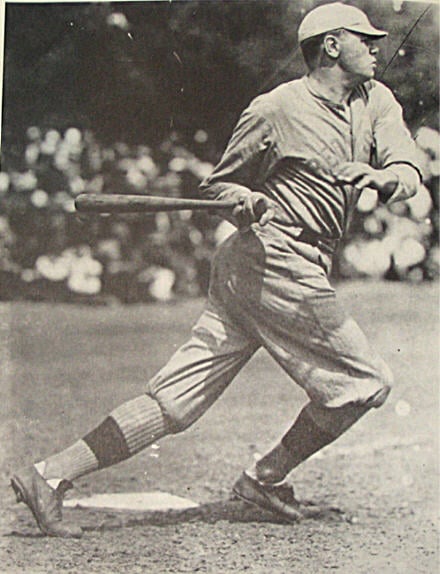
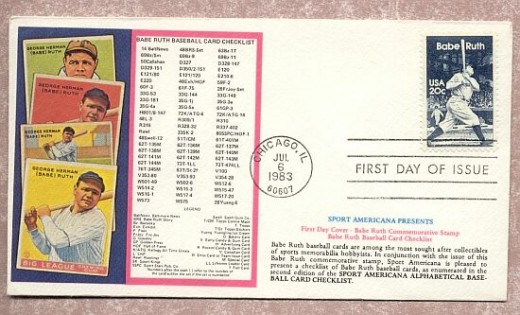
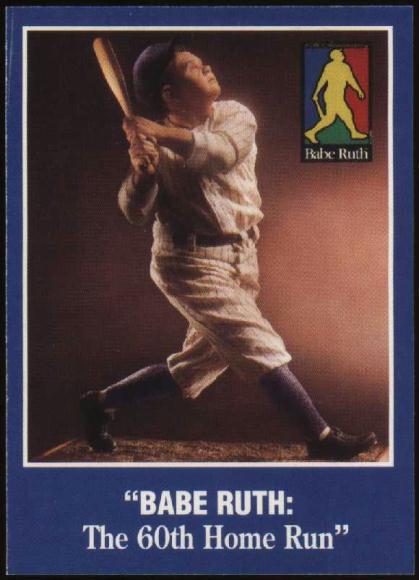
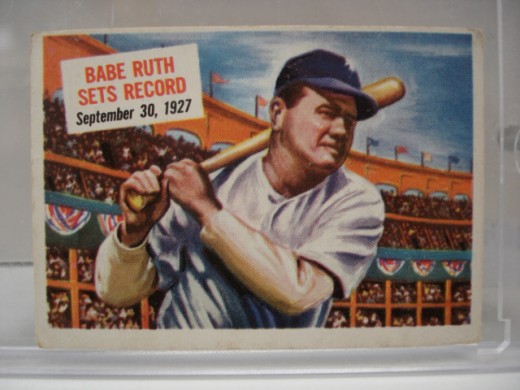
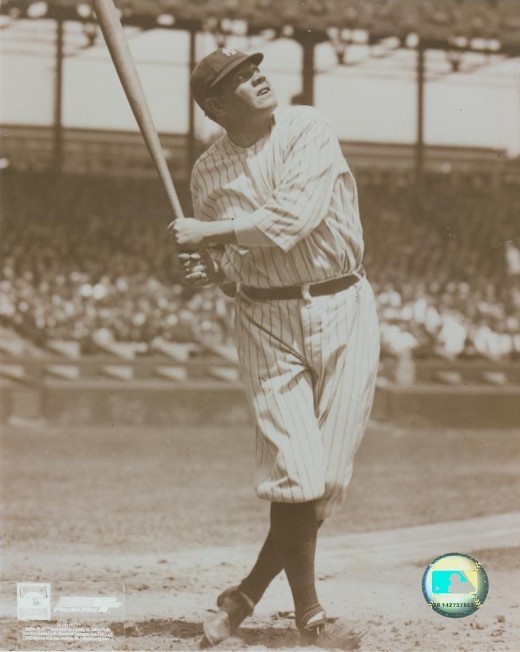
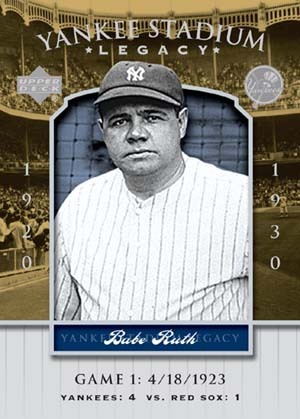
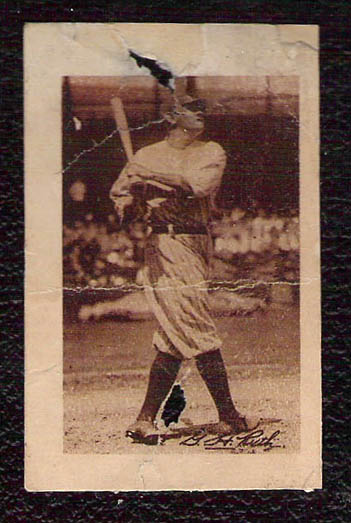
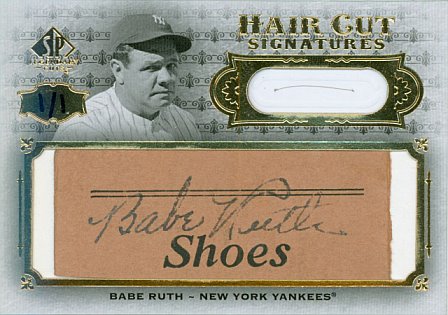
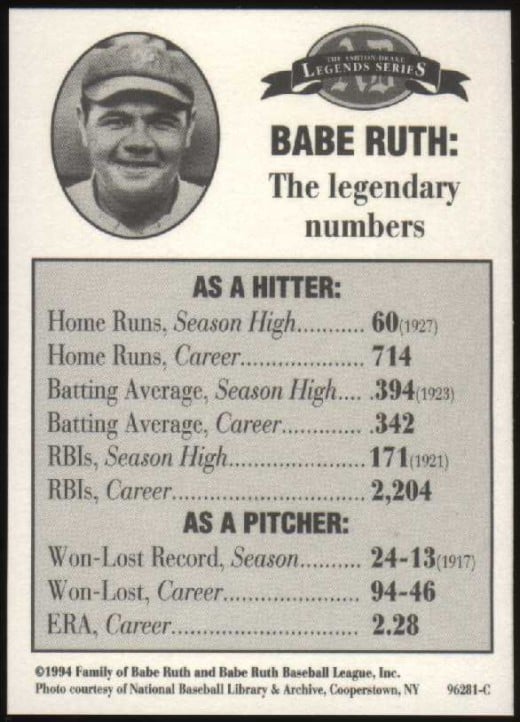
Retirement and post-playing days
Should Shoeless Joe Jackson Be In Baseballs Hall Of Fame
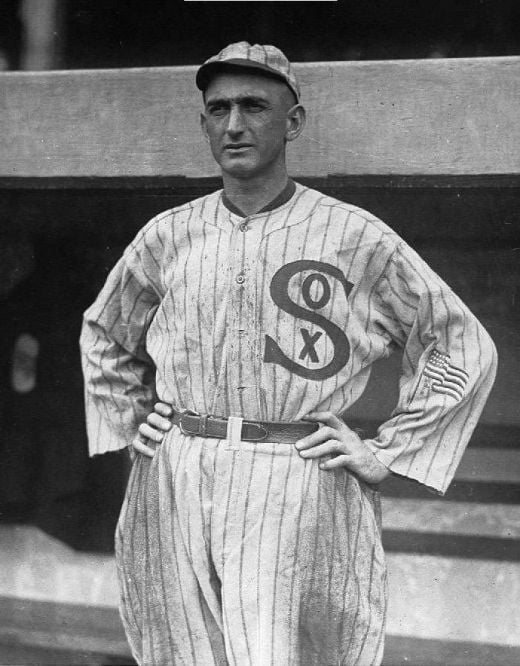
What do you think. Should Shoeless Joe Jackson be in Baseball's Hall Of Fame. Do you know the true story of Shoeless Joe Jacson? Click The Below Link And See.
Why Not Post Your Babe Ruth Comments Now.
